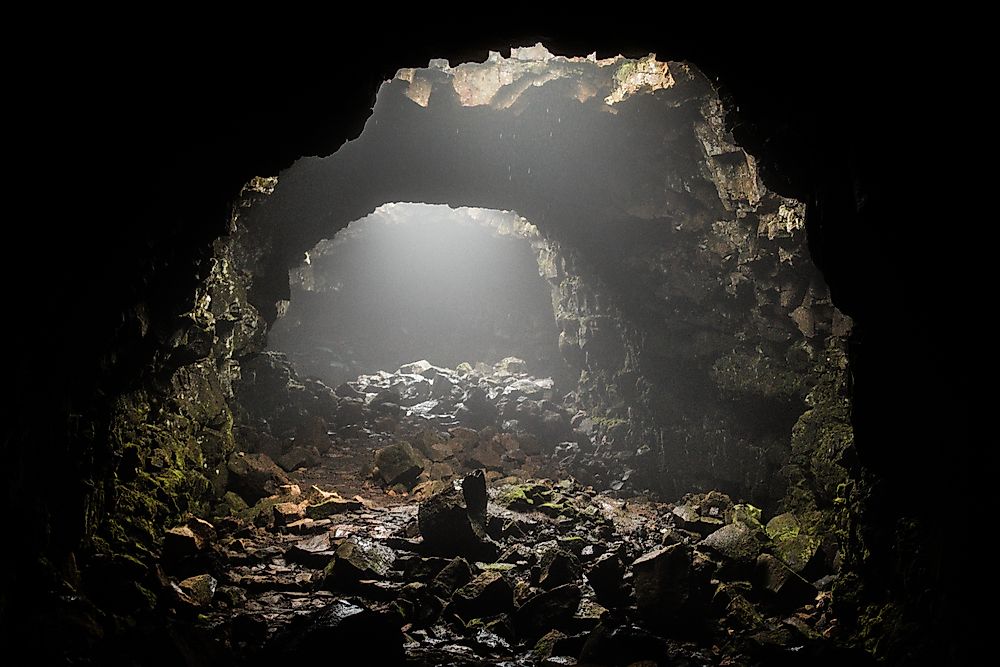Plants That Live in Caves

A cave is a hollow opening or void in the ground that is usually formed by the weathering of rock. Also referred to as caverns, caves have long been used by humans, and are inhabited by certain animals, insects and plants, including the rare blind crayfish and eyeless shrimp. Additionally, some caves have become popular for recreational activities and tourism. Caves can be subdivided into three parts: the entrance zone, the twilight zone, and the dark zone. Animals that live in caves are known as troglofauna. Most plants grow in parts of a cave that receive enough light required for photosynthesis. However, some types of plants can grow in the dark zone of a cave, as the cave's constant temperature and dampness supports the growth of certain species of moss and fungi.
Plants in the Entrance Zone
The entrance zone of a cave is the part nearest to the outside environment. This zone is characterized by lots of sunlight that is beneficial to plant growth. As a result, plants such as trees and grasses can grow in the entrance zone. The environment is also conducive for the growth of flowering plants.
Plants in the Twilight Zone
The twilight zone of a cave is characterized by only a small amount of light, but has a cool and moist environment that is suitable for plant growth. However, this small amount of sunlight is inadequate for the growth of flowering plants. Examples of plants that can survive in the twilight zone include ferns, liverworts, and mosses. A common adaptation to the small amount of light in the twilight zone is the movement of all chloroplasts to parts of the plant that are closest to the sunlight in order to maximize photosynthesis.
Plants in the Dark Zone
The dark zone of a cave receives no natural light. As a result, this part of the cave can only support the growth of plant species such as algae and fungi. For example, fungi utilize the nutrient-rich bat guano soil as a surface for their growth, and also use an alternative metabolic pathway instead of photosynthesis for survival.
Therefore, certain plants can grow in cave environments. However, flowering plants can only grow in the entrance zone, while more hardy plants like algae grow in the darker zones of a cave.











